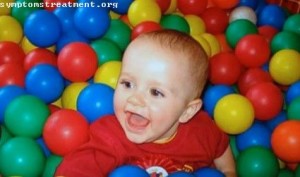
Duchenne muscular dystrophy is a hereditary disorder which involves degeneration of muscles. It quickly weakens the muscles and later becomes very serious. It is caused due to transmutation of gene in dystrophin. Dystrophin is a protein in the muscles and a defect in this leads to muscular dystrophy. It is rare and is found more in men than women.
Symptoms of muscular dystrophy
Symptoms can be seen from an early age. They are:
- Weakening of muscles: First it weakens the shoulders and lower part of the body and later affect the other parts. Calves usually become large in size.
- Tiredness: Getting tired easily.
- Difficulty in walking. Also, one may find it very difficult to run, hop or jump and eventually leading to disability
- Neurological disorder.
- Deformities in skeleton.

Causes of muscular dystrophy
It is one of the worst forms of muscular dystrophy. It worsens very fast. A protein in the muscles called dystrophin can develop abnormalities which lead to muscular dystrophy. People usually inherit this and men have higher risk of muscular dystrophy as compared to women. Even when there is no known family history of muscular dystrophy, people still have chances of getting muscular dystrophy. Death occurs very early usually in mid twenties. It may happen due to lung disorder.
Test and Diagnosis of muscular dystrophy
Tests and examination of the complete nervous system, heart, muscles and lung has to be done. Some of the tests and results are as follows:
- Genetic tests: It will help in knowing genetic errors in dystrophin gene
- Cardiomyopathy shows abnormal functioning of the heart muscles
- Deformities in muscles.
- Reduction in muscle mass.
- Pseudohypertrophy i.e., enlargement of tongue and calf muscles
- Congestive heart failure
- Irregular heart beat which generally tends to be rare
- Serum CPK helps in knowing the high bloodstream level
- Deformity of chest and back.
- Respiratory infections which includes pneumonia.
- Electromyography shows the damage of muscle tissues leading to muscle weakness.
- Muscle biopsy determines the deficiency of dystrophin
- Prenatal tests can also be taken. It will help to know whether the unborn child has defective dystrophin gene.
Duchenne Muscular dystrophy Treatment
Currently, there is no known cure for muscular dystrophy. But its effect can be controlled through various treatments which will improve the quality of life. Gene therapy is said to be a good treatment in future. If there is a family history of muscular dystrophy then genetic counseling is advised. Also if symptoms of muscular dystrophy are seen in kids then a doctor should be immediately consulted. Some of the treatments are as follows:
- Physical therapy:No or less activity will weaken the muscles and worsen the condition. Physical therapy helps in functioning of muscles. It helps in:
- Reducing the deterioration of muscles tissues through exercises and stretches, wherever advised.
- Avoiding future physical complications
- Regulating the respiratory functions and recommendation of breathing exercises as well as ways for clearance of secretions.
- Making a proper schedule with massage therapist to ease pain.
- It thus helps in attaining maximum physical movements.
- Occupational therapy: It helps in attaining a proper understanding of the person, their social surroundings and environment. This will help to create a proper treatment program and uplift the quality of life. Usually the patients have difficulty in caring for themselves, engaging in physical activities and having a leisurely time. This is linked to effects of muscular dystrophy i.e., decrease in mobility and strength, instable posture, contractures, weakening of limb movements. Occupational therapist concentrates on person’s shortcomings through meaningful occupations and then grades them through various assessments like:
-
- Splinting: Splints helps to stop abnormality and improves the functioning of limbs and other parts of body. It is also known as orthoses.
- Bracing: Braces improves the mobility and self care is possible.
- Seating and positioning: Correct seating is necessary to avoid spinal curvatures. Therefore proper wheelchairs are required and used, to avoid dysfunctional positioning and abnormalities.
- Manual muscle testing and Range of motion: Manual muscle testing helps to calculate the muscle mass, its strength and range of motion tests determine the joint movement. It will point to the need for splinting and improve contractures.
- Prescribed equipments: There are many types of equipment advised by occupational therapist such as walkers to avoid falling. Mechanical lift, transfer board also lessens the risk of fractures during transfer. Hand held showers and bath benches help the patients to independently take care for themselves as far as possible. In addition the patients may also use a wheelchair with pressure and free mattress to avoid ulcers in skin and abnormalities. For those who can’t carry their weight a commode chair can be used.
- Occupational therapist also arranges social gatherings to cope with depression and uplift their self esteem; assists in becoming financially independent through employments and looks after their physical and emotional support.
- Corticosteroids such as prednisolone and deflazacort increase energy and strength and defer severity of some symptoms.
- Randomized control trials are advised as it strengthens the muscles.
- Activities like swimming are suggested to improve physical movements.
- Some future treatments which are in progress are exon skipping, gene replacement, stem cell replacement therapy and analog up regulation.